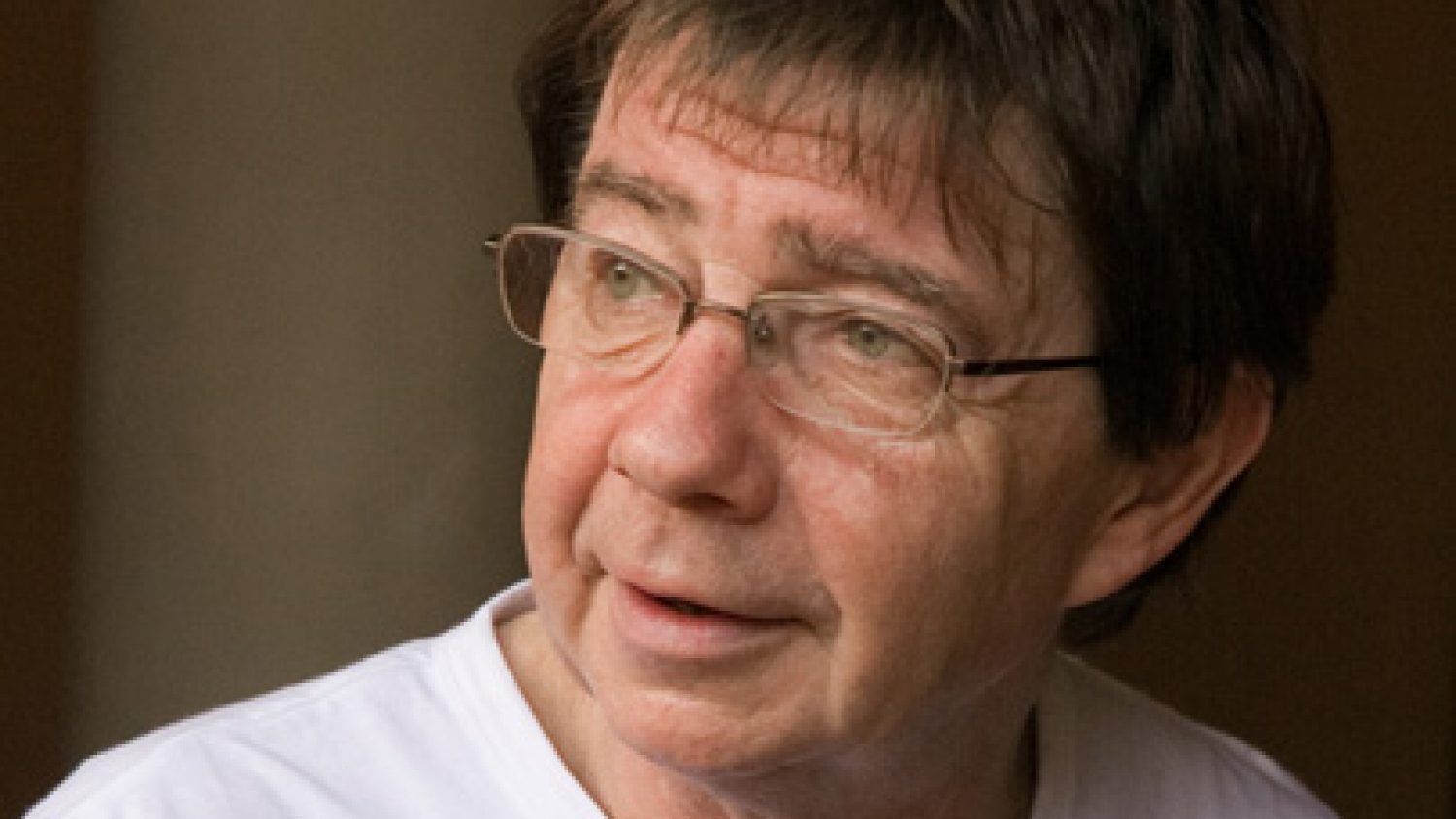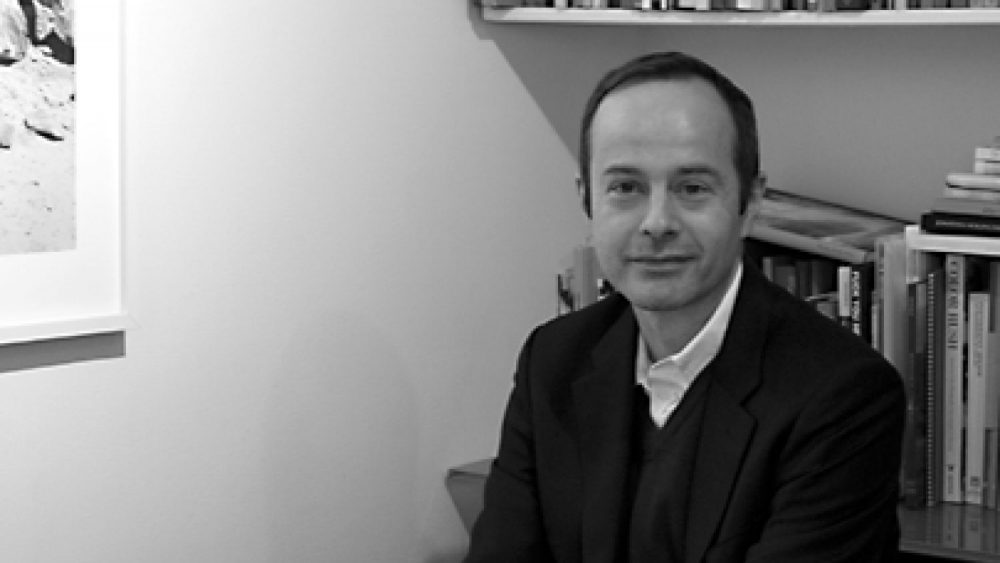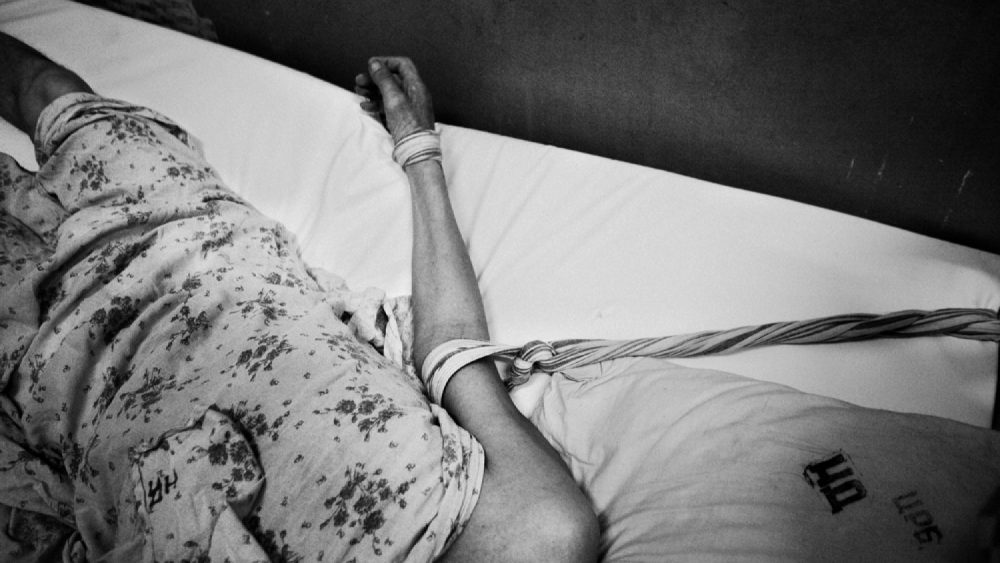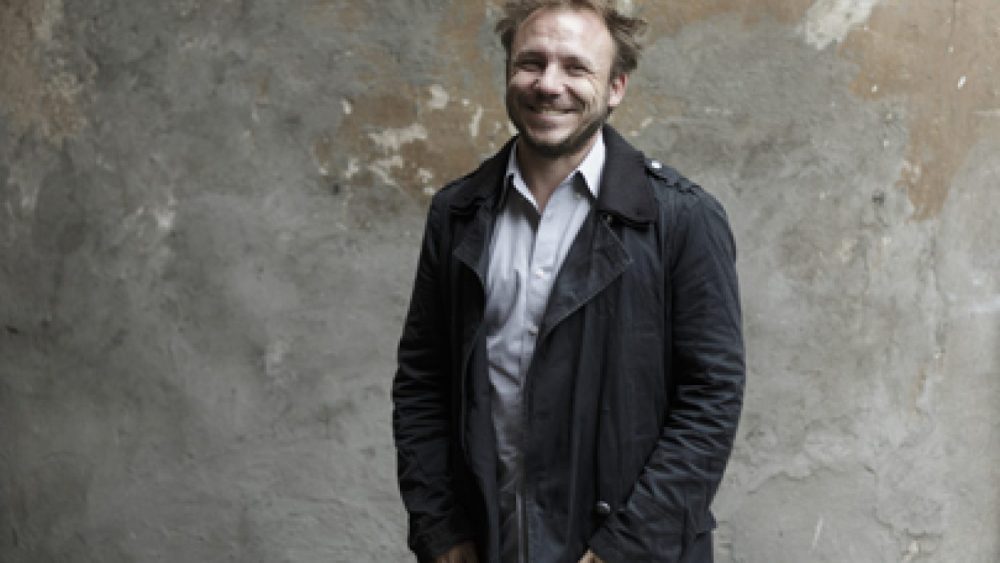Interview with Christian Caujolle
It is quite impossible to use just a few words to describe who Christian Caujolle (1953) is. His versatility, vast knowledge and work in the field of photography in nearly sixty years seem more than a pair of hands is capable of. In 1986 Caujolle established an agency of photographers Agence VU, later fulfilling his dream and adding a gallery, too. He emphasizes the importance of not distinguishing among various photography styles, but letting the author express himself or herself. Caujolle loves writing and teaching. His passion for East resulted in a photo festival organised in 2008 in Cambodia facilitating the development of photography. It’s clear that this Frenchman does what he is supposed to do and not only enjoys it, but works with a feeling of mission to help others. He has a well-set voice and kind eyes. And he loves picking mushrooms. In early August he came to Latvia to teach photo editing in ISSP masterclass.
How did the study and collaboration with such big minds as Roland Barthes, Michael Foucault and Pierre Bourdieu influence you?
I was in a very special position as a student at École Normale Supérieure which prepares professors either for a college or university, and we also had the opportunity to work with the professors from other universities. Mid 1970-ies were an important period in France with a lot of intellectuals and really strong political moments. I was a student of Roland Barthes because we were all interested in structuralism and questions of language. He was interested in photography but didn’t know anything, that’s true. He was in a process of analysing things and he was a real writer, maybe even a poet, fascinated. For me, his best book is not about photography but what he wrote about love. The strongest relationship I had was with Michel Foucault for a lot of reasons. For me, he was probably the most important philosopher in France alongside with Gilles Deleuze. I worked very close with Michel on different projects, I was researching for him at the Bibliothèque Nationale for his film (Moi, Pierre Rivière, …, E.R.) and we became and stayed close friends until he died. I began my thesis with Pierre Bourdieu but I never finished it. He changed the approach of sociology. I was really interested in the manner of how he was deconstructing and at the same time, how he was reconstructing the notion of sociology. He was working with an intent of making sociology a real science which was probably a dream but he got serious results both on showing the things that were happening in society and demonstrating that sociology can be a serious tool. I think that all is a vision; it’s a vision about how one period or generation is reproducing things in the structure of power, how power builds itself a possibility of future and not just has a moment of power. It’s remarkable. I was close with Bourdieu too, even though I decided not to continue my thesis but dedicate myself to journalism. I was lucky to have those experiences. It was a good time in France, not to say that yesterday was better than today but still it was a very peculiar moment of thinking and intellectualism in France. Probably because of May 1968 and because those philosophers and thinkers worked a lot before May 1968; after it, we were very concerned about the social situation. It was a serious rupture inside the French society and the right wing was still in power.
How did you decide to work in the field of photography most?
I’m not coming from the field of visual arts at all. At the university, I was specializing in languages and Spanish literature. When I finished my studies at the university, I returned to Libération where I had collaborated before; I had friends there, the daily newspaper was interesting and feisty, speaking about the issues that other dailies weren’t talking about. I began to write about literature, books and paintings. I had been interested in photography since I was a student. It was in 1973 when I met an incredible personality, a photographer Jean Dieuzaide who created the first photography gallery in Toulouse (Chateau d’Eau, E.R.). When I was in Paris in 1976, there was only one photography gallery – Agathe Gaillard. I knew nothing about photography, I went to the exhibitions for myself because I was attracted and interested. When I was a child, there was no camera, nor television at home, so the photos I had seen were from Paris Match. It happened that no one was writing about photography at the Libération. I was paid when the articles were published, so when I saw an exhibition, I wrote something and it somehow started. If I look at it today, it seems crazy, but at that moment, in 1979, I was going to that gallery every Saturday. I was spending my afternoons there and I met Henri Cartier-Bresson, André Kertész, Bill Brant, Ralph Gibson, Larry Clark, Brassaï, Robert Doisneau, Izis, Edouard Boubat. I was introduced, we were talking and things were absolutely normal. In 1981, we decided to transform the newspaper, we wanted to make it more professional. We invented a lot of new concepts for newspapers. I was asked to be in charge of all the visual contents, all the photography aspects included. It didn’t mean only the photo editor, I had a function where except the chief editor, we were five editors and everyone was responsible for the contents, the treatment and the ideas. My daily responsibility was to work with the photographers and the graphic department. I did it during five years and a half, I enjoyed it a lot. We changed a lot of things within the policy of using the photographs in the newspapers which was copied a lot, also in the United States, and I think that good ideas need to be copied. In 1986 we planned to do a weekly magazine, I had to create a structure for that, to produce and resell, as we didn’t have money; it was a moment when we created the VU agency. The weekly supplement wasn’t published but I continued to work with the agency, even though it was economically very difficult, but the agency still exists. In 1998 the agency was sold to a group of software, specializing in architecture and I got the possibility to create a gallery which was a dream of long time. Three and a half years ago I left because I wanted go back to teaching. I also want to write and to spend more time curating exhibitions and working maybe on projects which you can’t do when running the agency and the gallery. It’s more than a full time job.
Was the idea of creating the agency on your mind for years or was it a combination of favourable conditions and circumstances?
If we didn’t have the project of the weekly magazine, I would have never created the agency at that moment. 1986 was already the beginning of crisis for the agencies and we knew about it and I was convinced about the fact that we had to make a way to new technologies. There was not yet the digital imagery but it was obvious that we had to organize the archives digitally, etc. The real name of the agency is Agence VU, the Photographers Agency, emphasizing the photographers and not the photography. It wasn’t a cooperative as Magnum, we were acting as a newspaper, choosing the photographers and, of course, having discussions, trying to work on joint projects but they were not deciding about the strategy. It was a strange opportunity which was a pressure of events more than a decision of creating but the fact is the young photographers that I assigned and was working with at the newspaper, they all were saying that they needed a structure, a tool to distribute their archive, to help them finding more work, different projects. That was also the idea, to have a possibility to work on longer projects. When you run a daily, it’s crazy, you can’t seriously work on two years project with a photographer. At the beginning, it wasn’t a decision but afterwards I enjoyed it. The challenges were serious, including if I knew that we were wrong with the technologies – we needed a certain amount of money to use computers earlier. We were the first agency where all the images were classified on computers but I knew we had to go further to improve it. Unfortunately, we didn’t have the money.
How did the agency operate?
We lived with the income – 15% from the cooperate and advertising, 15% from cultural assignments, travelling exhibitions, some selling of prints, 30% from selling the reproduction rights from the archive and the rest from working directly with the magazines, the press, both the assignments and selling the stories we had produced or selling the ideas, the proposals of stories to the magazines and asking them to produce. We were not commercially strong enough in the number of people but we still did quite well.
What of all the things you accomplished while at the Agence VU was something that changed the photography world?
One of the things – I refused to dedicate the agency to only one kind of photography. In 1986 we had French, Spanish and other photographers’ work with staged, strange, and painted photographs in the archive. That was one of the points – not to dedicate ourselves only to documentary photography. The other thing was not to try to compete with other agencies on the news. We also did a lot of news, especially, in 1989, of course, as it was such a special year with the Wall, with the events in Europe. We also did an incredible work along with six Chinese photographers, it took all the energy of the agency. In Europe, for the communist countries, we made a big mistake – we were so enthusiastic, we went to all the communist countries but we sold almost nothing, we lost a lot of money. The pictures were many times stronger from those that were published but our machine wasn’t strong enough to compete with Gamma, Sigma, API or France Press. I’m not sad, it was an exciting moment. Another considerable thing – we gave a serious importance to logic between work done by photographers and what was done after – the exhibitions, the books. Between 1986 and 1990, I think we did more books and exhibitions than Magnum, and without using the archives. It is also important that we saw clearly the fact that the challenge was to use photography not only with the topics and the contents but also conceiving uses, knowing that a photograph that was going to make sense in a weekly, two years later can make another sense, meaning in a book or in an exhibition. We worked a lot on it. Another thing that was really clear, we were trained to find commercial work and we were not hiding it, as other photography agencies. We did it with two ideas – one was to oblige the clients to accept the styles of the photographers and the other one was the manner of making money which then permitted to produce other projects – personal or collective. It was a period when the agencies seemed to have some problems with the fact that we were making fast money with a portrait of, for example, a director of a bank. Personally, I never had a problem with that. It’s work and it permitted really to do other projects which were, of course, more important than shooting the portrait of a banker but it helps to do what is really important.
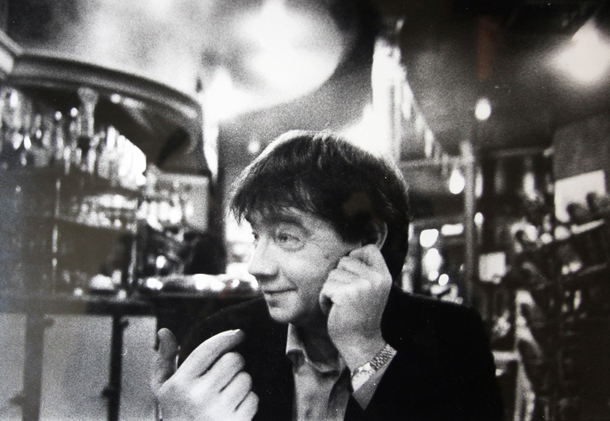
You have been a curator for a lot of exhibitions. What are the aspects that form a good show?
It’s very difficult to generalize. There are two things – a collective exhibition and a solo show are very different. Then, for a single photographer, an exhibition being a retrospective or on one topic, or a story are also different things. After all, the challenge is always the same and you can never have ideal conditions. I’m in the position of being the one in between someone who creates and the public who will receive. I know that my responsibility is to try to respect the work as much as possible, the creation of the photographer and to make it understandable for the public. After it’s complicated; an ideal exhibition for me… When you create an exhibition, you’re dealing with the space. In an ideal situation you normally would have to design the exhibition for the event and it wouldn’t travel. Except, if you’re working on a historical material, it’s another problem – you can’t change anything about the existing material and you have to find a space where it’s going to take place, to permit to present the best work and for public to understand the best possible. I had the experiences of showing the same material in an old church, in a former factory, in a museum, and each time I had a very clear concept of the nature of the collection and how I had to redesign the display of the exhibition. For a contemporary work I feel that normally you don’t have to make it travelling. The difference between, for example, a collector’s print where artist had to decide about the perfect size and perfect presentation which corresponds to his expression. In the exhibition, if we consider it an art object, we would do a limitation of number. I know photographers who propose five different sizes for one image, it makes no sense. When I curate a show, it’s exactly the same process when I am a picture editor or when I work on a book, there are two steps – the first one is probably the most photographic one when I think only about the photographer and the photography. When I was assigning a photographer, I was thinking about the photography – who is the photographer who would give me the most astonishing point of view that I’m expecting. After, the second step, when I’m going to publish in a newspaper or when I’m going to decide about the exhibition, in that moment I have to totally forgot about the photographer and to think only about the viewer, the public – how he’s going to receive it, what is going to be the impact if I put it big or small, if I frame or not, what the sequence means. It’s the same kind of questions I asked when I was in the newspaper. I think these are the two important moments for someone who’s between the artist and the public. Someone who has to be obsessed enough to understand the artist’s work and the moment where he has to be only obsessed by the perception and by the public. It’s probably easier for someone like me who isn’t producing the images than for others who are.
That is exactly something I wanted to ask – can the artist create this space you’ve been talking about or there is a need of someone who has more distance to it?
It depends. The majority of photographers need people to edit. But there are other, absolutely brilliant examples, like Susan Meiselas, Gilles Peress, or Andreas Gursky who have serious knowledge about the photography to be a curator of their own work. I have more doubts and I have been many times disappointed by the shows, curated by the photographers about the work of other photographers. It’s strange because I’ve seen exhibitions in Louvre, in Paris where contemporary artists, writers, people from cinema and theatre curated exhibitions from Louvre’s collection and adding other things, and they were great shows. Someone from the theatre has a very strong imaginative world, he creates the images that are not still, and probably he is more able to have a distance, a more reflective point of view. Plus, a photographer curating a show probably feels in a competition too.
You established a photography festival in Cambodia. Why there?
It’s always the same, I think – it’s a personal history. I discovered South-East Asia in the mid-1980s because I organised a show in Bangkok. I stayed for two more weeks and it was a fine cultural discovery. I had a very good feeling about its culture and society. Afterwards I returned there every year, I travelled to Burma, Laos, Thailand, Vietnam. I dreamt about going to Cambodia but it was impossible. Coming from the literature world, my first passion of visual arts is not painting but sculpture. For someone who loves sculpture, Cambodia is the place, you have to go. Probably because of my past in the 1970ies, I have always been very concerned of what had happened with Khmer Rouge which is still impossible for me to conceptualize. I wanted to go there to see the sculpture and to find a certain understanding of what had happened. The first time I went there was in 1992 and those few days were quite dangerous. In 1995 French Cultural centre offered to do a workshop for young people who wanted to become photographers. It was clear, they wanted to have a job, to work for the newspapers. I did it for five years, some of them are really doing great, working for the agencies, I’m happy for them. The students also developed some great personal work. In between, I travelled a lot but in 2008 the new director of French Cultural centre called me and after talking to him I decided to organise a festival. Even though we didn’t have money, I didn’t hesitate.
Has it been successful so far? Does it have a good response from the locals?
It’s complicated but at the same time I’m really happy with it. The concept is the exchange between Europe and Asia, only young photographers can participate. From the very beginning, I wanted to give an access to the things the public didn’t have the access to. When I go there, I travel with 20 kg of books because there are no photography books at all. The hope was that the existence of the festival would permit the birth of a new generation of Cambodian photographers. I created an annual workshop of eight months at the French Cultural centre, so young people, who don’t really know yet who they are, come every Saturday whenever they can because they work, they have exams, because it’s raining. But they come and the masters help with the techniques, only 2 out of 62 students had a professional camera at the beginning. After a month and a half, professors decided to work on a project. I have to say, that 95% from young Cambodian photographers come from that structure which is still informal but it is important that they have this possibility of meeting and exchanging. Twice a month, when they are with their teachers, we connect through Skype wherever I am and we discuss various issues. The situation is very special because there is no visual tradition of flat imagery, the visual content is sculpture and architecture. There are a very few paintings, even in the temples there is almost nothing. I had a feeling that there is a visual gap between the 14th century and today. Nevertheless, they are very creative and surprise me a lot, it’s exciting to get to know their thoughts. With the public it’s difficult. Cambodia is still one of the poorest countries in the world. Imagine pushing the doors of a gallery, you don’t even have that much space where to exhibit, so we do a lot of exhibitions outside with big prints on the walls or other structures, we do projections and this magic thing – the projections on the boats. We have six boats with the screens on for hours in the evening. People look but I’m not sure what they keep from it. It took time but now we do exhibitions at the university which has a big space and the last year we had 45,000 visitors. Obviously, students go to see the exhibitions but they also bring friends, family. Plus we have an educational programme during the festival, we rent buses and bring the entire classes from the colleges to see the exhibitions and to meet the photographers. Everything is for free. There is one obvious thing, people will never think about coming to our school – Studio Image – because of the festival. Although, last year we exhibited a girl who’s 19 and she works at tobacco factory. She had seen exhibitions and one of her friends had exhibited before and she came with one image and she told that she wanted to do a series. She was accepted. There are also programmes for children – one at the countryside, in the village, one in the capital. I don’t know what the response is. I know that the foreigners see the exhibitions, I’m happy with that but it’s not my challenge. I see that the exhibitions we do outside with the writing, people stop and read and that’s really positive. I also see that the best photographers have been exhibited outside too – in Australia, in France, in London, some museums in Singapore and Japan bought prints. It’s the beginning – we’re only going to have the fifth edition. As the budget was cut, I created an association and found some private money, we have to recreate the structure to continue, but overall, it’s positive. I’m very lucky to have started the festival when the young Cambodian artists started to have some success. I see the transformation of the country and I will spend more time at the country and at some point will probably retire there. I feel good in that culture which is more dynamic, problematic, exciting than the entire Europe. People are not happy because of the crises but they don’t realize that they still live in the most successful and developed countries. Paris is beautiful but the city is a museum, so I don’t have such a strong desire to live there anymore.
In addition to all the things you’ve already mentioned, you’re also in the juries of international competitions, you teach. I imagine that you do all of them because you like to be part of all these processes. Still, what is the most thrilling and rewarding activity among them?
I will turn 60 next year, one of the reasons why I quit the agency and the gallery was probably the feeling that I was at the moment of my life when the most important was to transmit the things. Sometimes I have a feeling that I help people not to waste the time. I can help them not to spend years when they can learn it in a few days. That’s the most important. The other thing – I want to seriously go back to writing, I love writing but it requires a serious discipline and time and not to be occupied with many other things.
